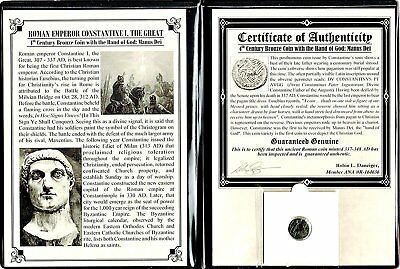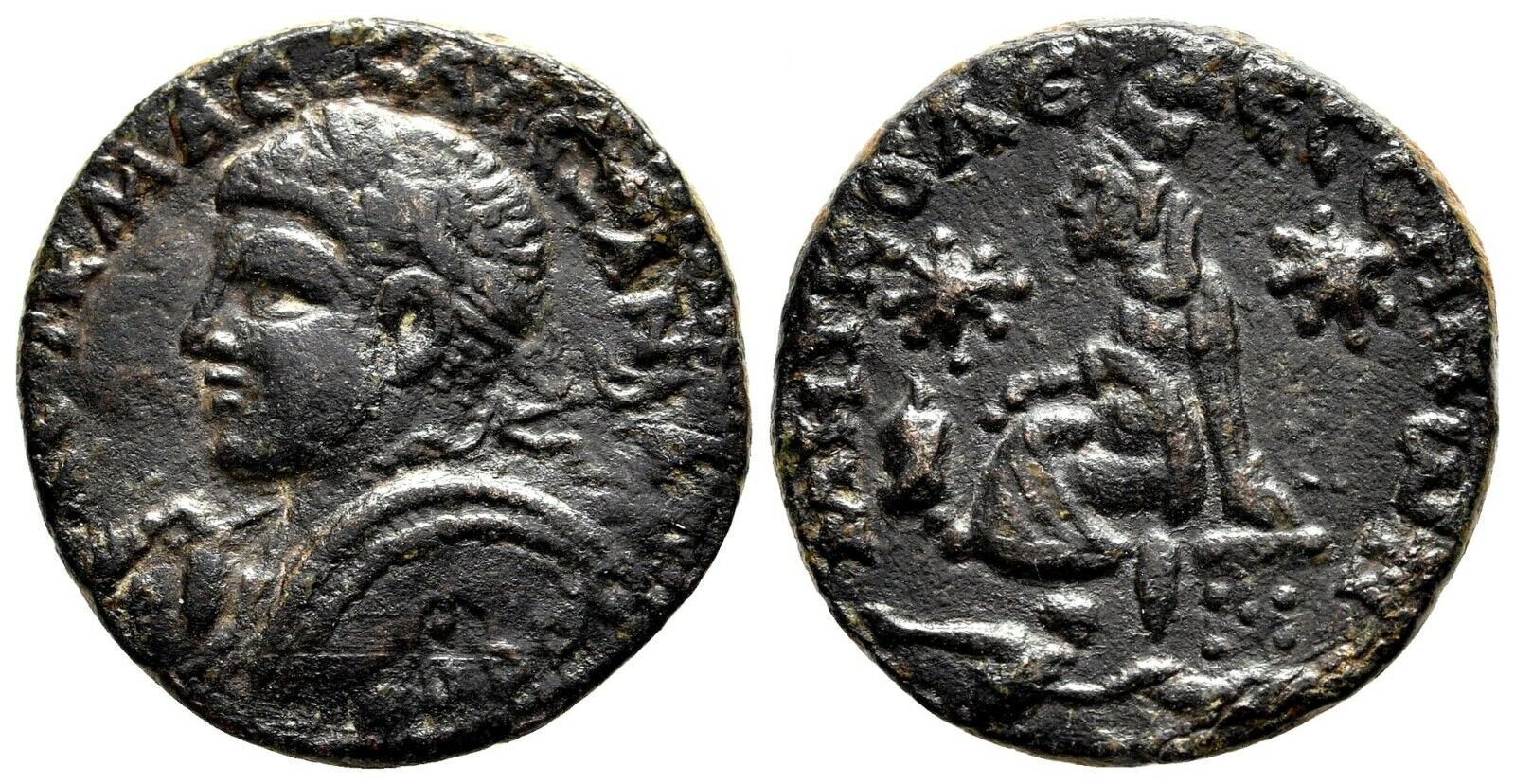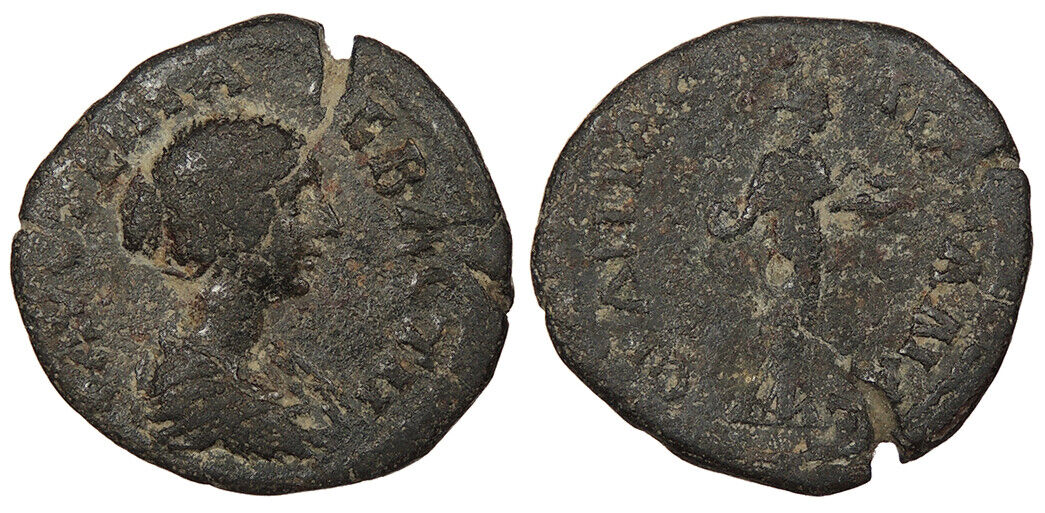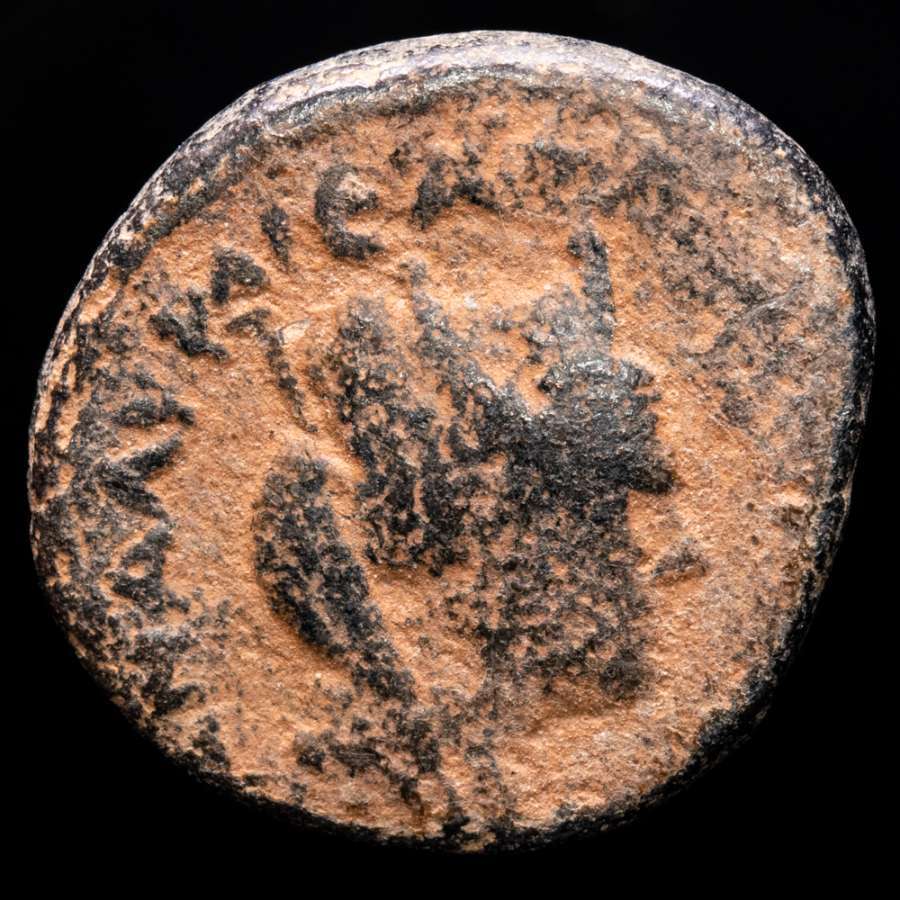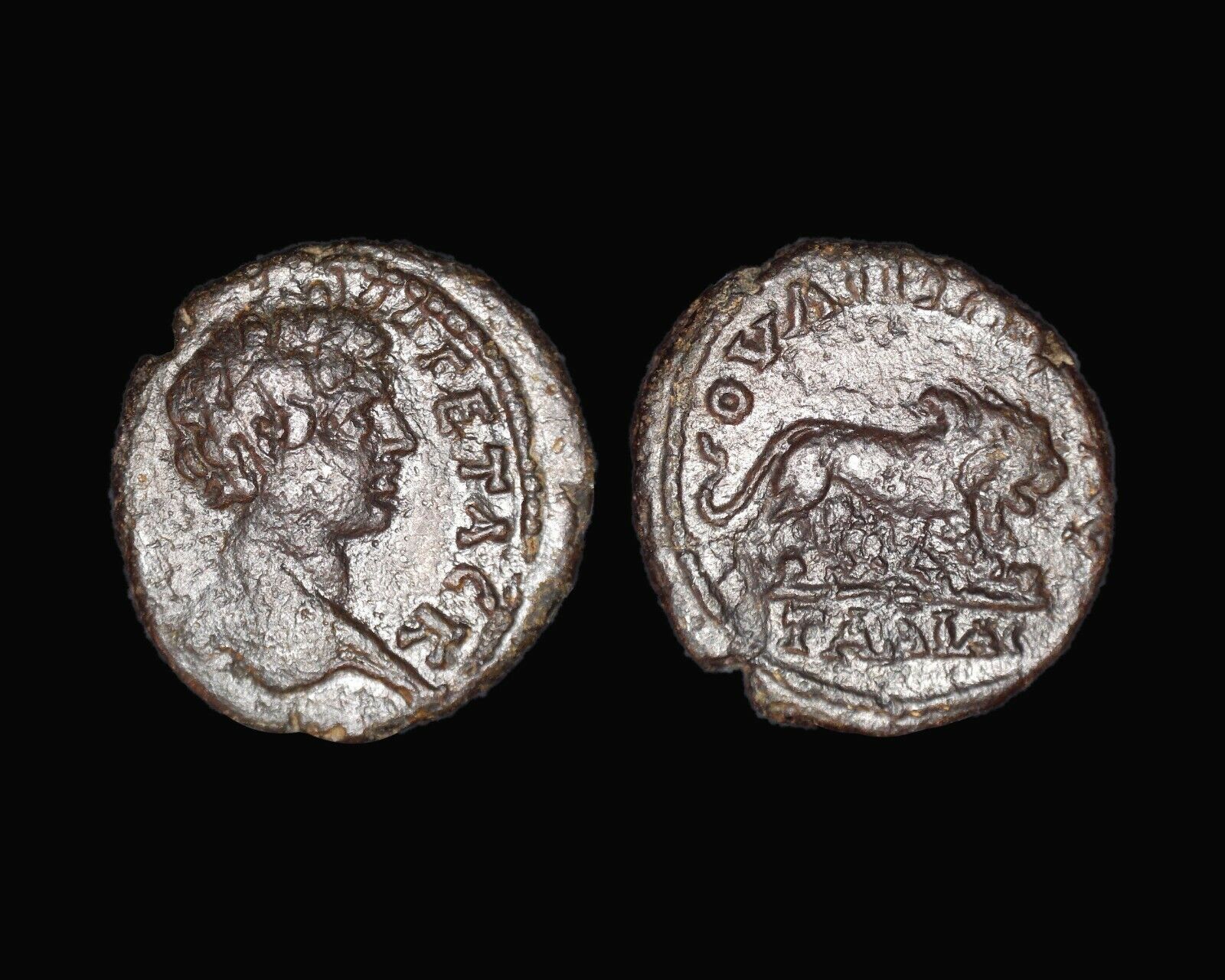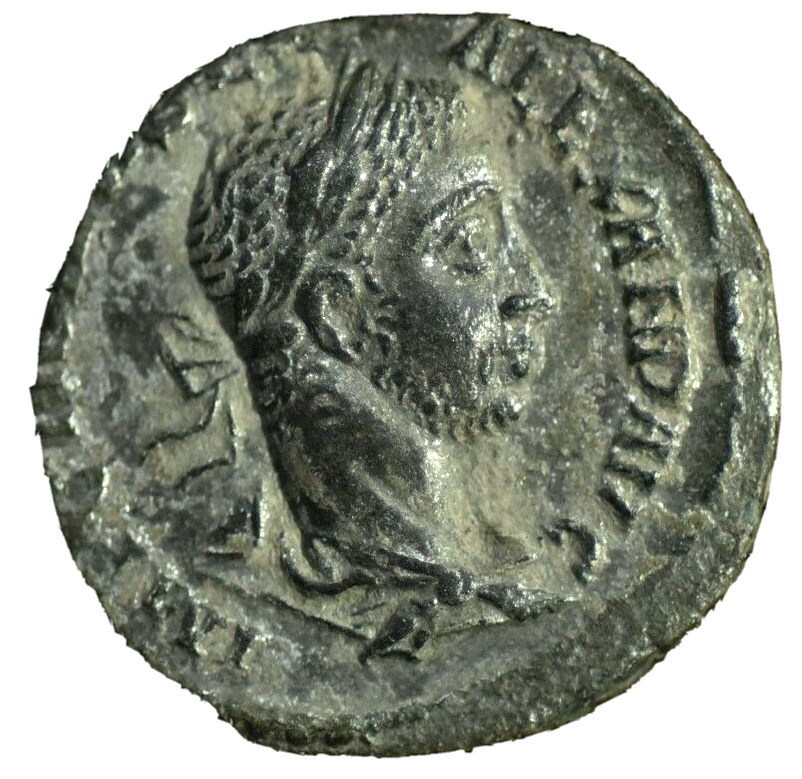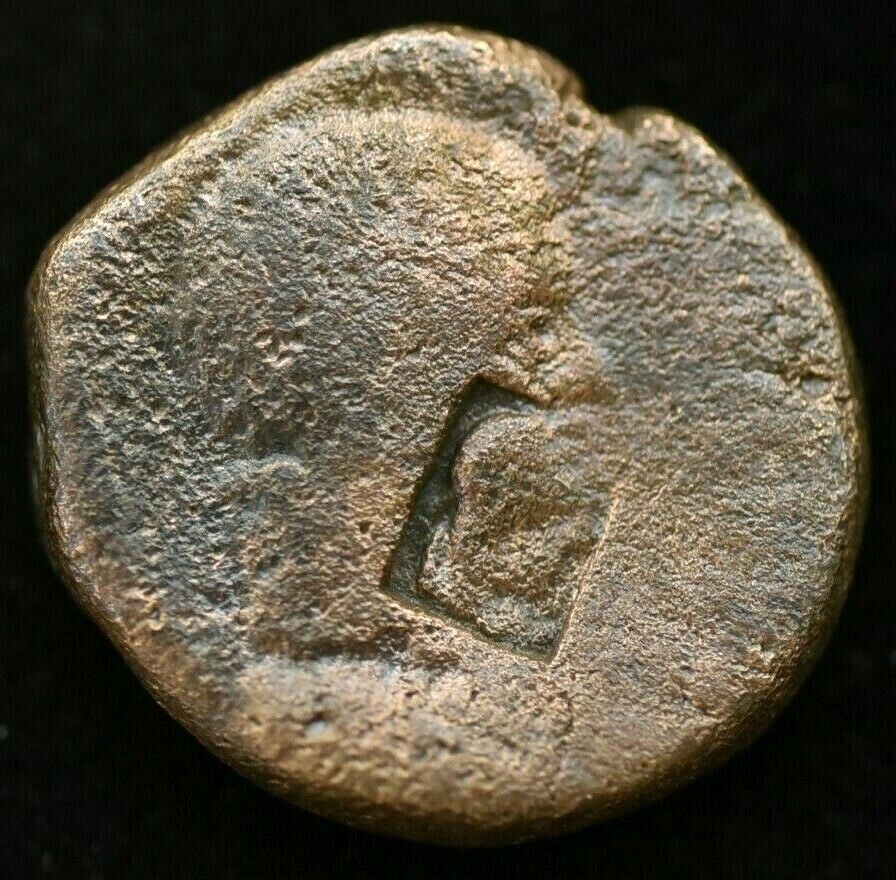-40%
TREBONIANUS GALLUS Rare Roman Provincial Coin HERCULES Finishes Labors i35221
$ 26.4
- Description
- Size Guide
Description
Item:i35221
Authentic Ancient Coin of:
Trebonianus Gallus - Roman Emperor: 251-253 A.D. -
Bronze 23mm (7.83 grams) from a Roman provincial mint
Laureate head right.
Nude Hercules standing facing, leaning on club which is set atop rock.
This is the stance that Hercules takes when he is depicted as having completed his labors.
You are bidding on the exact item pictured, provided with a Certificate of Authenticity and Lifetime Guarantee of Authenticity.
Hercules and the Hydra
(ca. 1475) byAntonio del Pollaiuolo the hero wears his characteristic lionskin and wields a club
Hercules
is the Roman name for the Greek divine hero Heracles, who was the son of Zeus (Roman equivalent Jupiter) and the mortal Alcmene. In classical mythology, Hercules is famous for his strength and for his numerous far-ranging adventures.
The Romans adapted the Greek hero's iconography and myths for their literature and art under the name
Hercules
. In later Western art and literature and in popular culture,
Hercules
is more commonly used than
Heracles
as the name of the hero. Hercules was a multifaceted figure with contradictory characteristics, which enabled later artists and writers to pick and choose how to represent him. This article provides an introduction to representations of Hercules in the later tradition.
Labours
Hercules capturing theErymanthian Boar, by J.M. Félix Magdalena (b. 1941) Main article: Labours of Hercules
Hercules is known for his many adventures, which took him to the far reaches of the Greco-Roman world. One cycle of these adventures became canonical as the "Twelve Labours," but the list has variations. One traditional order of the labours is found in the
Bibliotheca
as follows:
Slay the Nemean Lion.
Slay the nine-headed Lernaean Hydra.
Capture the Golden Hind of Artemis.
Capture the Erymanthian Boar.
Clean the Augean stables in a single day.
Slay the Stymphalian Birds.
Capture the Cretan Bull.
Steal the Mares of Diomedes.
Obtain the girdle of Hippolyta, Queen of the Amazons.
Obtain the cattle of the monster Geryon.
Steal the apples of the Hesperides.
Capture and bring back Cerberus.
Side adventures
Hercules had a greater number of "deeds on the side"
(parerga)
that have been popular subjects for art, including:
Killing a fire-breathingCacus (Sebald Beham, 1545)
Holding up the world forAtlas (based on Heinrich Aldegrever, 1550)
Wrestling with Achelous(16th-century plaque)
Fighting the giant Antaeus(Auguste Couder, 1819)
Retrieving Alcestis from the underworld (Paul Cézanne, 1867)
Freeing Prometheus(Christian Griepenkerl, 1878)
Roman era
Main article: Hercules in ancient Rome
The Latin name
Hercules
was borrowed through Etruscan, where it is represented variously as Heracle, Hercle, and other forms. Hercules was a favorite subject for Etruscan art, and appears often on bronze mirrors. The Etruscan form
Herceler
derives from the Greek
Heracles
via syncope. A mild oath invoking Hercules (
Hercule!
or
Mehercle!
) was a common interjection in Classical Latin.
Baby Hercules strangling asnake sent to kill him in his cradle(Roman marble, 2nd century CE)
Hercules had a number of myths that were distinctly Roman. One of these is Hercules' defeat of Cacus, who was terrorizing the countryside of Rome. The hero was associated with the Aventine Hill through his son Aventinus. Mark Antony considered him a personal patron god, as did the emperor Commodus. Hercules received various forms of religious veneration, including as a deity concerned with children and childbirth, in part because of myths about his precocious infancy, and in part because he fathered countless children. Roman brides wore a special belt tied with the "knot of Hercules", which was supposed to be hard to untie. The comic playwright Plautus presents the myth of Hercules' conception as a sex comedy in his play
Amphitryon
; Senecawrote the tragedy
Hercules Furens
about his bout with madness. During the Roman Imperial era, Hercules was worshipped locally from Hispania through Gaul.
Germanic association
Tacitus records a special affinity of the Germanic peoples for Hercules. In chapter 3 of his
Germania
, Tacitus states:
... they say that Hercules, too, once visited them; and when going into battle, they sang of him first of all heroes. They have also those songs of theirs, by the recital of this
barditus
as they call it, they rouse their courage, while from the note they augur the result of the approaching conflict. For, as their line shouts, they inspire or feel alarm.
In the Roman era Hercules' Club amulets appear from the 2nd to 3rd century, distributed over the empire (including Roman Britain, c.f. Cool 1986), mostly made of gold, shaped like wooden clubs. A specimen found in Köln-Nippes bears the inscription "DEO HER[culi]", confirming the association with Hercules.
In the 5th to 7th centuries, during the Migration Period, the amulet is theorized to have rapidly spread from the Elbe Germanic area across Europe. These Germanic "Donar's Clubs" were made from deer antler, bone or wood, more rarely also from bronze or precious metals.They are found exclusively in female graves, apparently worn either as a belt pendant, or as an ear pendant. The amulet type is replaced by the Viking Age Thor's hammer pendants in the course of the Christianization of Scandinavia from the 8th to 9th century.
Medieval mythography
Hercules and the Nemean lionin the 15th-century
Histoires de Troyes
After the Roman Empire became Christianized, mythological narratives were often reinterpreted as allegory, influenced by the philosophy of late antiquity. In the 4th century, Servius had described Hercules' return from the underworld as representing his ability to overcome earthly desires and vices, or the earth itself as a consumer of bodies. In medieval mythography, Hercules was one of the heroes seen as a strong role model who demonstrated both valor and wisdom, with the monsters he battles as moral obstacles. One glossator noted that when Hercules became a constellation, he showed that strength was necessary to gain entrance to Heaven.
Medieval mythography was written almost entirely in Latin, and original Greek texts were little used as sources for Hercules' myths.
Renaissance mythography
The Renaissance and the invention of the printing press brought a renewed interest in and publication of Greek literature. Renaissance mythography drew more extensively on the Greek tradition of Heracles, typically under the Romanized name Hercules, or the alternate name Alcides. In a chapter of his book
Mythologiae
(1567), the influential mythographer Natale Conti collected and summarized an extensive range of myths concerning the birth, adventures, and death of the hero under his Roman name Hercules. Conti begins his lengthy chapter on Hercules with an overview description that continues the moralizing impulse of the Middle Ages:
Hercules, who subdued and destroyed monsters, bandits, and criminals, was justly famous and renowned for his great courage. His great and glorious reputation was worldwide, and so firmly entrenched that he'll always be remembered. In fact the ancients honored him with his own temples, altars, ceremonies, and priests. But it was his wisdom and great soul that earned those honors; noble blood, physical strength, and political power just aren't good enough.
In art
In Roman works of art and in Renaissance and post-Renaissance art, Hercules can be identified by his attributes, the lion skin and the gnarled club (his favorite weapon); in mosaic he is shown tanned bronze, a virile aspect.
Roman era
Hercules of the Forum Boarium
(Hellenistic, 2nd century BCE)
Hercules and Iolaus (1st century CE mosaic from the Anzio Nymphaeum, Rome)
Hercules (Hatra, Iraq,Parthian period, 1st-2nd century CE)
Hercules bronze statuette, 2nd century CE (museum of Alanya, Turkey)
Hercules and the Nemean Lion (detail), silver plate, 6th century (Cabinet des Médailles, Paris)
Modern era
The Giant Hercules
(1589) by Hendrik Goltzius
The Drunken Hercules
(1612-1614) by Rubens
Hercules in the Augean stable (1842, Honoré Daumier)
Comic book cover (c.1958)
Hercules, Deianira and the Centaur Nessus
, byBartholomäus Spranger, 1580 - 1582
Henry IV of France, as Hercules vanquishing theLernaean Hydra (i.e. theCatholic League), byToussaint Dubreuil, circa 1600. Louvre Museum
In numismatics
Hercules was among the earliest figures on ancient Roman coinage, and has been the main motif of many collector coins and medals since. One example is the 20 euro Baroque Silver coin issued on September 11, 2002. The obverse side of the coin shows the Grand Staircase in the town palace of Prince Eugene of Savoy in Vienna, currently the Austrian Ministry of Finance. Gods and demi-gods hold its flights, while Hercules stands at the turn of the stairs.
Juno, with Hercules fighting a Centaur on reverse (Roman, 215-15 BCE)
Club over his shoulder on a Roman denarius (ca. 100 BCE)
Maximinus II and Hercules with club and lionskin (Roman, 313 CE)
Commemorative 5-francpiece (1996), Hercules in center
Other cultural references
Pillars of Hercules, representing the Strait of Gibraltar (19th-century conjecture of the
Tabula Peutingeriana
)
The Cudgel of Hercules
, a tall limestone rock formation, with Pieskowa Skała Castle in the background
Hercules as heraldic supporters in the royal arms of Greece, in use 1863-1973. The phrase "Ηρακλείς του στέμματος" ("Defenders of the Crown") has pejorative connotations ("chief henchmen") in Greek.
In films
For a list of films featuring Hercules, see Hercules in popular culture#Filmography.
A series of nineteen Italian Hercules movies were made in the late 1950s and early 1960s. The actors who played Hercules in these films were Steve Reeves, Gordon Scott, Kirk Morris, Mickey Hargitay, Mark Forest, Alan Steel, Dan Vadis, Brad Harris, Reg Park, Peter Lupus (billed as Rock Stevens) and Michael Lane. A number of English-dubbed Italian films that featured the name of Hercules in their title were not intended to be movies about Hercules.
See also
Hercules (comics)
Hercules in popular culture of the 20th and 21st centuries
Sword-and-sandal
Hercules: The Legendary Journeys
Gaius Vibius Trebonianus Gallus
(206 - August, 253), was Roman Emperor from 251 to 253, in a joint rule with his son Volusianus .
Gallus was born in Italy, in a family with respected ancestry of Etruscan senatorial background. He had two children in his marriage with Afinia Gemina Baebiana : Gaius Vibius Volusianus, later Emperor, and a daughter, Vibia Galla. His early career was a typical
cursus honorum
, with several appointments, both political and military. He was suffect consul and in 250 was nominated governor of the Roman province of Moesia Superior , an appointment that showed the confidence of emperor Trajan Decius in him. In Moesia, Gallus was a key figure in repelling the frequent invasion attacks by the Gothic tribes of the Danube and became popular with the army, catered to during his brief Imperial rule by his official image: military haircut, gladiatorial physique, intimidating stance (
illustration, left
).
[1]
In June 251, Decius and his co-emperor and son Herennius Etruscus died in the Battle of Abrittus , at the hands of the Goths they were supposed to punish for raids into the empire, largely owing to the failure of Gallus to attack aggressively. When the army heard the news, the soldiers proclaimed Gallus emperor, despite Hostilian , Decius' surviving son, ascending the imperial throne in Rome. Gallus did not back down from his intention to become emperor, but accepted Hostilian as co-emperor, perhaps to avoid the damage of another civil war. While Gallus marched on Rome, an outbreak of plague struck the city and killed young Hostilian. With absolute power now in his hands, Gallus nominated his son Volusianus co-emperor.
Eager to show himself competent and gain popularity with the citizens, Gallus swiftly dealt with the epidemic, providing burial for the victims. Gallus is often accused of persecuting the Christians , but the only solid evidence of this allegation is the imprisoning of Pope Cornelius in 252.
Like his predecessors, Gallus did not have an easy reign. In the East, Persian Emperor Shapur I invaded and conquered the province of Syria , without any response from Rome. On the Danube, the Gothic tribes were once again on the loose, despite the peace treaty signed in 251. The army was not long pleased with the emperor, and when Aemilianus , governor of Moesia Superior and Pannonia, took the initiative of battle and defeated the Goths, the soldiers proclaimed him emperor. With a usurper threatening the throne, Gallus prepared for a fight. He recalled several legions and ordered reinforcements to return to Rome from the Rhine frontier. Despite these dispositions, Aemilianus marched onto Italy ready to fight for his claim. Gallus did not have the chance to face him in battle: he and Volusianus were murdered by their own troops in August 253, in Interamna (modern Terni) .
Bronze of Gallus dating from the time of his reign as Roman Emperor, the only surviving near-complete full-size 3rd century Roman bronze (Metropolitan Museum of Art)
[2]
Your browser does not support JavaScript. To view this page, enable JavaScript if it is disabled or upgrade your browser.
Frequently Asked Questions
How long until my order is shipped?:
Depending on the volume of sales, it may take up to 5 business days for shipment of your order after the receipt of payment.
How will I know when the order was shipped?:
After your order has shipped, you will be left positive feedback, and that date should be used as a basis of estimating an arrival date.
After you shipped the order, how long will the mail take?
USPS First Class mail takes about 3-5 business days to arrive in the U.S., international shipping times cannot be estimated as they vary from country to country. I am not responsible for any USPS delivery delays, especially for an international package.
What is a certificate of authenticity and what guarantees do you give that the item is authentic?
Each of the items sold here, is provided with a Certificate of Authenticity, and a Lifetime Guarantee of Authenticity, issued by a world-renowned numismatic and antique expert that has identified over 10000 ancient coins and has provided them with the same guarantee. You will be quite happy with what you get with the COA; a professional presentation of the coin, with all of the relevant information and a picture of the coin you saw in the listing.
Compared to other certification companies, the certificate of authenticity is a -50 value. So buy a coin today and own a piece of history, guaranteed.
Is there a money back guarantee?
I offer a 30 day unconditional money back guarantee. I stand behind my coins and would be willing to exchange your order for either store credit towards other coins, or refund, minus shipping expenses, within 30 days from the receipt of your order. My goal is to have the returning customers for a lifetime, and I am so sure in my coins, their authenticity, numismatic value and beauty, I can offer such a guarantee.
Is there a number I can call you with questions about my order?
You can contact me directly via ask seller a question and request my telephone number, or go to my About Me Page to get my contact information only in regards to items purchased on eBay.
When should I leave feedback?
Once you receive your order, please leave a positive. Please don't leave any negative feedbacks, as it happens many times that people rush to leave feedback before letting sufficient time for the order to arrive. Also, if you sent an email, make sure to check for my reply in your messages before claiming that you didn't receive a response. The matter of fact is that any issues can be resolved, as reputation is most important to me. My goal is to provide superior products and quality of service.
Your browser does not support JavaScript. To view this page, enable JavaScript if it is disabled or upgrade your browser.



